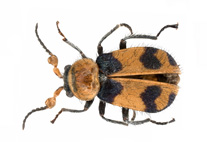Abstract
Noctuidae is one of the most species-rich families of Lepidoptera (Nieukerken et al. 2011). The Palaearctic noctuid genus Dasypolia Guenée includes more than a hundred species some of which are still undescribed. The genus is distributed predominantly in the mountain massifs of Asia, reaching the highest species diversity in the Tibetan and Himalayan regions. Many species of Dasypolia have been described during last three decades (Hacker & Peks 1990, 1992, 1996; Ronkay & Varga 1990; Ronkay et al. 1991; Ronkay & Plante 1992; Ronkay & Zilli 1993; Gyulai & Ronkay 1995; Hreblay & Ronkay 1995, 1999; Ronkay et al. 1995; Hacker & Ronkay 1996; Hreblay & Ronkay 1998; Hreblay et al. 1998; Ronkay et al. 1998; Ivinskis & Saldaitis 2010; Benedek et al. 2011; Volynkin 2012; Benedek et al. 2014; Ronkay et al. 2014; Benedek & Saldaitis 2014). The genus is now subdivided into twelve subgenera, six of which have recently been described by Benedek et al. (2011) and Benedek & Saldaitis (2014). One subgenus, Tschetwerikovia Bundel, 1966 has been synonymised with the nominate subgenus by Ronkay et al. (2014).

